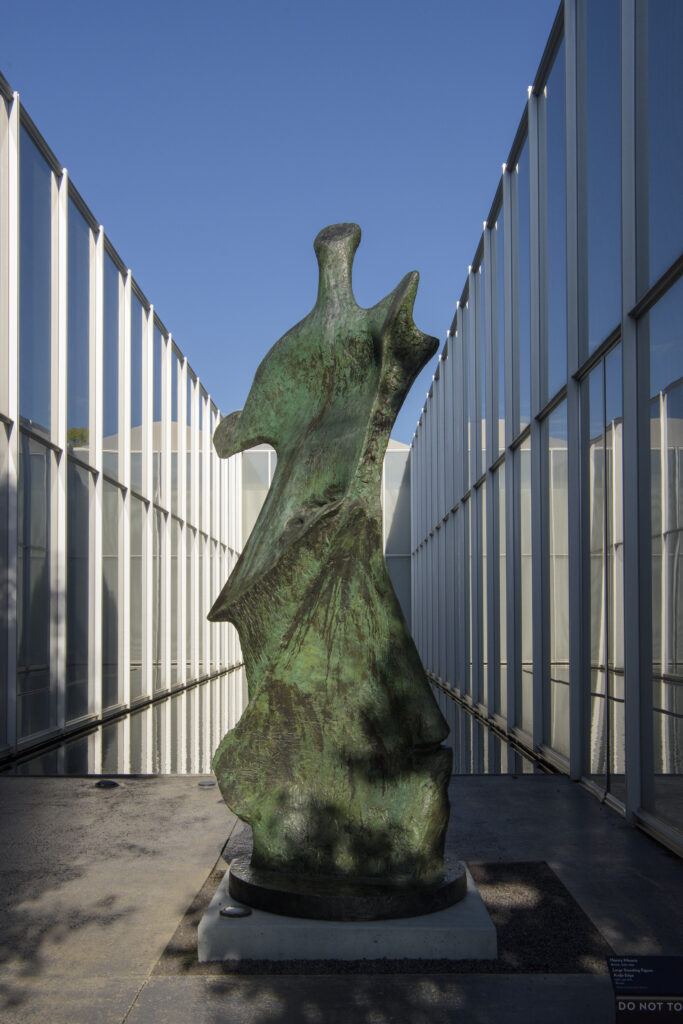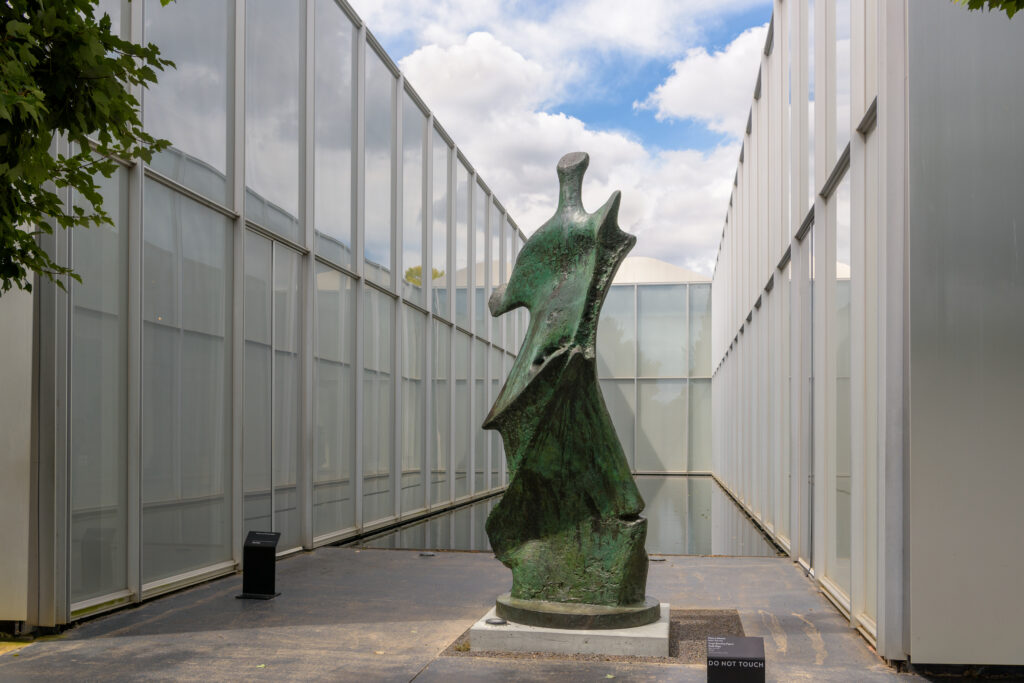Large Standing Figure: Knife Edge (work of art)
Artwork Info
Key Ideas
- This abstract bronze sculpture was inspired by a bird bone and an ancient Greek sculpture of a winged goddess. Abstract art is a style of art that does not attempt to represent objects and forms realistically.
- This work is also an example of expressionist art. Expressionist art often depicts flat and distorted forms that express the artist’s personal view.
- Henry Spencer Moore was a sculptor known for creating abstract works in bronze. He is considered to be one of the most important British artists and sculptors of the 20th century.
- Moore often used found objects that he covered in clay to create small models or figures for his sculptures. A small model of a sculpture is called a maquette. Moore created a maquette of this sculpture by adding clay on top of a bird’s breastbone. Then he created a larger version and cast it in bronze.
Learn More
Henry Spencer Moore’s sculpture, Large Standing Figure: Knife Edge, arrived at the Museum in 1997. Moore created this sculpture in 1961, at a time in his career when he was experimenting with modeling his sculptures by smearing and pinching clay on top of pieces of bone. The form of this sculpture took its shape from clay that Moore applied to the top of a bird’s breastbone. It is an abstract figure that was inspired by both a bird and the ancient Greek sculpture of a winged goddess titled Winged Victory of Samothrace. The forms of wings are represented in the curves and the edges on the sides of the sculpture.
Moore is best known for his abstract bronze sculptures. He is considered to be one of the most important British artists and sculptors of the 20th century. He also worked in printmaking, textile design, and drawing. Moore often used found objects (such as bones) and smeared and pinched clay directly onto the objects to create small models or figures for his sculptures. He created a maquette (a small model of a sculpture) before he created a larger version and cast it in bronze.
A sculptor is a person who is interested in the shape of things, a poet in words, a musician by sounds. The secret of life is to have a task, something you devote your entire life to, something you bring everything to, every minute of the day for the rest of your life.
Henry Spencer Moore
Moore lived and worked during a period of big changes in art. In his early days as an artist, impressionism was a popular style. Eventually expressionism replaced impressionism. Expressionist art often depicts flat and distorted forms that express the artist’s personal view. This artistic movement introduced abstraction, a style of art that does not represent objects and forms realistically.
Abstraction means getting away from a visual interpretation but nearer to an emotional one.
Henry Spencer Moore
When Large Standing Figure: Knife Edge was installed in the Museum Park, a crane was used to lift the bronze sculpture through the surrounding elm trees. Museum team members had to pull limbs away to give the sculpture clearance and guide it to the ground.
Additional Resources
Resources for Teachers
- Read an article about Moore’s artistic process.
- View a timeline of the artist’s life and work.
- Watch a video about an exhibition of his work.
Resources for Students
- View an interactive map that includes images of Moore’s work.
- Read an article about the artist.
- Watch a video about another sculpture by this artist.


